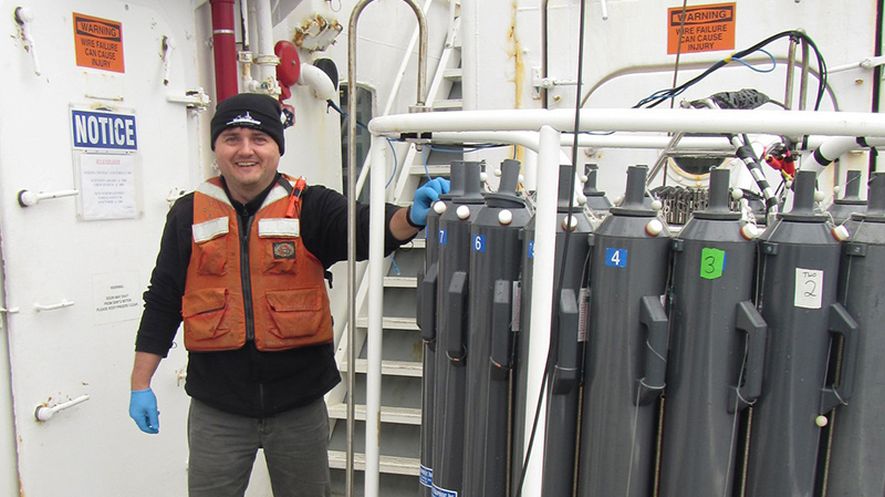Scientists representing eight institutions conducted in-situ observations and laboratory experiments to determine if Hurricane Isaac redistributed sedimented oil near the Deepwater Horizon site.
Using a turbidity sensor and a deep-sea particle camera after the storm passed, they found thick hazy water layers known as bottom nepheloid layers (BNLs) 200 meters above the seafloor close to the wellhead. They observed aggregates greater than 1 millimeter in diameter and a distinct bacterial response to enhanced particle concentrations within the BNLs’ most particle-rich sections. Experiments using water and resuspended sediment from the study area showed similar bacterial activity and macroaggregate formation. These results suggest the 2012 storm possibly induced a mechanism that resuspended and redistributed sediment exposed to the 2010 oil spill. The findings are published in Deep Sea Research Part II: Topical Studies in Oceanography: Enhanced particle fluxes and heterotrophic bacterial activities in Gulf of Mexico bottom waters following storm-induced sediment resuspension.
The roller bottle laboratory experiments provided the team with a means to more directly investigate the effects of enhanced particle concentrations on bacterial activities. Macroaggregates formed within one day, and bacterial cell numbers were more than twice as high by day four compared to incubations with no sediment suspensions. These bacteria exhibited increased protein production and cell-specific enzymatic activities demonstrating a distinct metabolic response of deep-sea heterotrophic bacterial communities to resuspended sediments.
Study author Kai Ziervogel said the discharge from the Mississippi River continued weeks after Hurricane Isaac, leading to coastal sediment remobilization and subsequent lateral transport into the Mississippi Canyon. Ziervogel summarized their results, “Benthic storms in the Mississippi Canyon can be linked to storm-induced perturbations on the shelf. Like a mountain avalanche, material transport from shallow into deeper waters resulted in resuspension of deep sea sediments on its way through the Mississippi Canyon. Water samples from the BNLs revealed high levels of bacterial metabolic rates, suggesting that deep sea resuspension events could lead to a chronic flux of oil carbon and associated substances such as chemical dispersants into deep water microbial food webs.”
The study’s authors are Kai Ziervogel, Clayton Dike, Vernon Asper, Joseph Montoya, Joy Battles, Nigel D’souza, Uta Passow, Arne Diercks, Maggie Esch, Samantha Joye, Caroline Dewald, and Carol Arnosti.
************
This research was made possible in part by a grant from the Gulf of Mexico Research Initiative (GoMRI) to the Ecosystem Impacts of Oil and Gas Inputs to the Gulf (ECOGIG) consortium.



